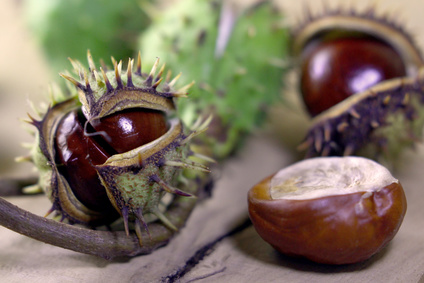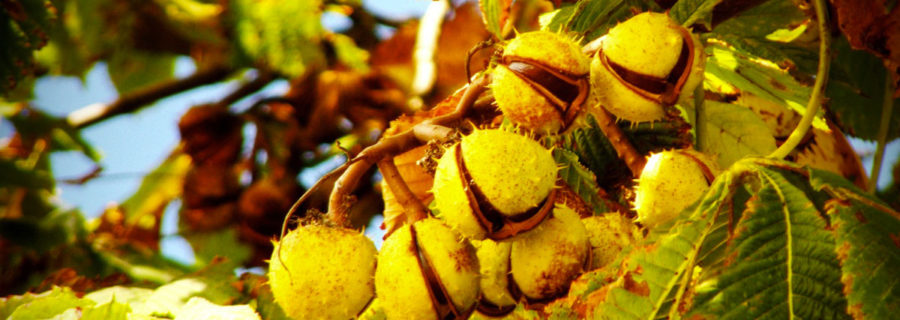When is the Best Time to Prune a Horse Chestnut Tree?
Late winter to early spring.
Expert insight into the best time to prune a horse chestnut tree; why horse chestnut tree pruning is important, and how to identify common horse chestnut tree diseases.
The horse chestnut tree, of the Latin Aesculus hippocastanum is a non-native deciduous species of tree which has become prevalent in the UK. The name is derived from the scar left on the twigs after the leaves have fallen which resembles an inverted horse shoe with nail holes. This association is thought to explain why the fruits of the tree – conkers – were once ground up and fed to horses to cure coughs.
The mature horse chestnut tree has the potential to reach heights of 40 metres and a spread wider than 8 metres, and the lifespan is typically 300 years.


Why prune a horse chestnut tree?
The horse chestnut tree does not tend to send out vigorous shoots that require a high degree of control which mean only light pruning is needed.
The main aim of pruning a horse chestnut tree is to eliminate diseased or damaged branches. Due to the potential size of the tree, any dead wood could be substantial in weight, which means it should be removed periodically.
In addition, air flow and light penetration is important for any tree in order to promote its good health. If shoots are congested or crossing it is good practice to remove them and also to prune out any shoots that are growing in unwanted directions.
When is the best time for horse chestnut tree pruning?
People often get confused over the best time to prune a horse chestnut tree. Because it is deciduous, it is assumed the horse chestnut tree should be pruned during its dormant period, i.e. from late winter to early spring. Whilst this is the case for most deciduous trees, it definitely is not for the horse chestnut.
These trees bleed sap extensively when pruned, even towards the close of their dormant period. It is therefore best to prune a horse chestnut tree in mid-summer after the new growth has matured.

What to look for when pruning a horse chestnut tree
Horse chestnut trees are prone to fungal diseases and in particular bleeding canker. If you see cankers (sunken areas of bark) with a dark reddish brown fluid oozing from them, or you see a dried rusty-brown or black deposit, you will need to keep a close eye on the tree. If the condition continues to worsen then you should think about removing it, as it could well infect other horse chestnut trees in the vicinity. If you do remove the tree then it should be burned and any tools used thoroughly disinfected.
The horse chestnut leaf mining moth can attack the tree in large numbers. If you see leaves turning brown and falling early, this could well be down to this insect, although there is little cause for concern as there is no evidence to suggest it will harm the tree in the long term. Other issues suffered by this tree include horse chestnut leaf blotch (look for irregular brown blotches of dead tissue or shrivelled leaves), the horse chestnut scale, coral spot and leaf spot.
Tree Preservation Orders
Never go ahead with any tree work without first finding out whether there is a Tree Preservation Order (TPO) in place. If so, permission must be obtained for the works and this can take up to eight weeks to be granted. In addition, if the tree is located in a conservation area, permission must be obtained before starting works of any nature.
The importance of horse chestnut tree pruning expertise
The horse chestnut tree is particularly susceptible to fungal diseases and bleeding canker, which is caused by bacteria and fungus-like organisms. It is therefore important to keep a close eye on the health of the tree and to look out for any signs of typical diseases.
Light crown thinning or crown lifting is sometimes acceptable; however unnecessary pruning could put the tree under stress, particularly when it is ploughing energy into growing leaves, so proceed with caution and ALWAYS seek professional advice from a qualified tree surgeon before doing anything. Certainly don’t opt for pollarding as this is quite a drastic method of pruning and the tree may not withstand the infection and decay caused by the wounds.
An experienced tree surgeon will be aware of precisely how and when to prune your horse chestnut tree in order to meet your aims, and will always place their core focus on promoting the health of the tree.
If you have a horse chestnut tree on your land that needs pruning, why not contact T.H. Tree Services? As fully qualified and extensively experienced tree surgeons, we are able to offer specialist knowledge and expertise in all aspects of horse chestnut tree pruning. For a free, no-obligation quotation, give us a call on 01268 642814 or get in touch here.
Had a fallen tree in the early hours of Monday morning, called for quote and the team had it cleared on the same day. Really good communication when the lads were onsite and did a great job. Lots of pride in their work shown with the thorough clear up. Would thoroughly recommend.
Thank you Stuart for your kind review. We were glad to be able to help you with your fallen tree. If there's anything else you need in the future, please don't hesitate to get in touch.







